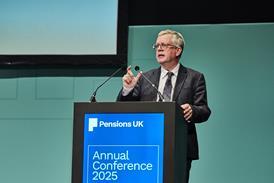Employers have been looking at a range of non trust-based drawdown solutions, say consultants, as trustee interest in providing flexi-access to members remains low.
Up to April 6 this year DC savers were compelled to annuitise their savings and buy into a guaranteed income for life.
In the post-freedoms world savers can choose to take their retirement income as cash, buy an annuity or draw down their savings in tranches over a number of years through flexible access.
However, research by law firm Linklaters conducted in April this year showed just 20 per cent of trustees and advisers plan to offer drawdown capabilities within the bounds of their scheme.
Gareth Craft, associate at Linklaters, said survey respondents showed more appetite for providing drawdown than had been anticipated but they were still held back by a lack of available products and the additional governance demands that come with offering greater flexibility.
“Before the survey no more than 5 per cent of our clients were looking to offer flexi-access within the scheme, possibly less,” he said. “However, [it's a] question of trustee time, cost and governance; offering flexi-access drawdown will result in further trustee governance requirements, [which are] already high because of all the changes from last year.”
Craft said that adding drawdown to the mix was "asking quite a lot of trustees and potentially adds to the cost of schemes”.
The Linklaters survey revealed nearly half (46 per cent) of trustees were willing to offer a degree of access to the new flexible lump sums, with a preference for a one-off option for members to take their entire pot as cash at retirement.
Alternative avenues to flexi-access
When considering drawdown options trustees may have found they are torn between a desire to facilitate member freedoms and a reluctance to take on the burden of rising costs and administration.
Paul Leandro, partner in Barnett Waddingham’s DC consulting team, said schemes and employers could work together to implement a specialist retirement vehicle outside the parameters of the qualifying workplace scheme.
“Trustees and companies have thought, if we’re going to offer the freedom perhaps we could introduce a specialist retirement vehicle?” said Leandro.
He added: “[It] would cost more but if the member wanted to move into that vehicle they essentially move… outside of the auto-enrolment regime and are not constrained to the cap nor the governance requirements of the trust-based setting.”
Gurmakh Hayre, UK head of DC solutions at consultancy KPMG, also said a number of his large clients were considering creating a support vehicle for employees outside of the scheme.
“Post-retirement [employees] can access support and help which might include a proposition or a plan… to access the flexibility,” said Hayre.
He added: “To do so they just move their pot from the trust-based scheme to this separate arrangement, but it would very much be on an individual basis, a [self-invested personal pension] or something.”
Hayre said employers could endorse a particular adviser or set of products but must conduct due diligence and be mindful of how they position that arrangement in employee communications.
Market monitoring
Mike Spink, DC pension consultant at Spence & Partners, did not think current consensus on drawdown had changed among trustees but thought many would be closely monitoring the market to stay abreast of developments.
“What we’re hearing is that, whilst in-scheme drawdown might only have been adopted by relatively few schemes so far, most trustees will be keeping a watching brief on market developments and are likely to revisit current decisions over the next 12 months,” he said.
He added: “The situation is fluid and it may be that some of the very large DC schemes have accelerated their thinking in this area.”






















